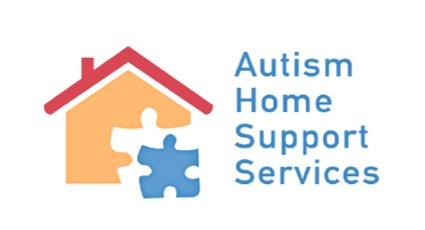Is ABA Therapy Worth the Time?
ABA therapy is often recommended for children with autism. Its benefits range from learning communication and social skills to reducing challenging behavior.
Applied Behavior Analysis (ABA) is the therapy most often recommended for young children with autism. Its benefits are widely recognized, from helping children with autism learn age-appropriate communication and social skills to reducing challenging behavior.
While research shows that young children with Autism Spectrum Disorder make the greatest progress with 20 to 30 hours of intensive therapy each week, parents are often concerned about finding so much time in their already busy lives.
Parents find that investing time in ABA helps their child learn, grow and be happier. It also teaches them how to help their child continue to improve and strengthens family life.

Finding the Time
Intensive ABA therapy is not as time-consuming as it sounds. Parents of a young child with autism are spending at least 30 hours each week helping their child. Much of that time could be used to help their child learn more desirable behaviors.
For example, ABA therapy can transform the time parents spend soothing a child who is having frequent meltdowns into time spent teaching the child how to communicate instead.
ABA therapy is provided by a therapist who comes into the home or at a specialized therapy center. Parents are encouraged to participate as much as they like, but they can also do other tasks during therapy sessions. Some parents who spend most of the day supervising their child are pleasantly surprised by how much more time they have available for at-home activities while the child is receiving ABA therapy.
Further, parents often end up performing activities of daily life for children with autism, such as dressing and bathing, preparing meals, feeding and so on. Parents normally do these tasks for young children, but they are difficult and very time-consuming for older children.

What is Applied Behavior Analysis?
Applied Behavior Analysis or “ABA” is a scientific, proven therapy that uses positive reinforcement to help children with autism learn behavior that is typical for their age, improve communication and social skills, and decrease problem behavior.
ABA is only treatment for autism that has been endorsed by the U.S. Surgeon General and the American Academy of Pediatrics. ABA is also an “evidence-based” treatment: Its effectiveness in helping children with autism has been confirmed in more than 600 research studies.
With a focus on finding each child’s natural motivation, ABA therapy breaks tasks and behaviors into small pieces, and practices until a child masters the skills and can use them in various environments and situations. It can help a child with autism get better at using verbal language, making eye contact, getting dressed, using the toilet, playing with other children and so on.
Every ABA therapy program is tailored to each child’s unique needs. Therapists work closely with parents throughout therapy to identify and work on their top priorities for communication and behavior.

What Does ABA Therapy Look Like?
Ideally, a young child with autism will have a number of three- to four-hour therapy sessions each week. This may sound long for a three-year-old, but sessions include plenty of breaks and fun to keep the child engaged
Most ABA therapy takes place during play and everyday activities. This is because everything a child does — from getting dressing to playing games, eating a snack, taking a walk or interacting with siblings — offers opportunities to work on behavior and communication.
If a child moves towards a toy kitchen, the therapist might open the refrigerator, take something out and put it in a pan on the stove. Then she tells the child it’s his turn. It will likely take many turns until the child learns the full sequence, but she praises him lavishly at each step and demonstrates again. When he can complete the activity, the therapist offers more praise and adds another action, such as using a spoon to stir the food in the pan. This looks and feels like a game, but the child is learning to take turns, follow instructions and copy an expanding string of tasks.
Similarly, a child who wants a specific snack but cannot ask for it may fall down screaming and kicking. An ABA therapist will help the child learn small steps to replace the meltdown with asking for what she wants. This might start with teaching her to say “cookie” and receive one. Over time, the therapist will help her learn a more complicated request, such as “Can I have a cookie?” or “Can I have a chocolate cookie?”
Therapists track each session carefully so there is data to demonstrate the child’s progress, as well as identify which parts of the program are most effective and which parts should be adjusted.

ABA for Parents
Therapy sessions also teach parents the fundamentals of ABA and strategies they can use every day. When a new situation occurs — such as a meltdown at the grocery store — parents have the skills and confidence to handle it.
It is especially helpful for parents to learn basic ABA tools when a child is young, because older children are often more difficult to manage. If a toddler is thrashing on the floor and refusing to go to bed, a parent can pick her up and move her.
An angry 10- or 12-year-old is probably too big to pick up. But if the child has a foundation of ABA therapy, he or she is likely to respond well when parents use ABA techniques to deal with an immediately challenging situation and teach more desirable behavior going forward. A Happier Family Life
Long-term, intensive ABA therapy can not only build the foundation for a young child to achieve his or her full potential. It can also improve life for the entire family.
A child who is having frequent meltdowns, running away or destroying things is disruptive. These experiences are especially painful for parents. They can see that their child is overwhelmed and frustrated, but they do not know how to comfort him or her.
Intensive ABA therapy can help the child learn to communicate, which reduces frustration and the difficult behavior it fuels. Fewer meltdowns make family life smoother and easier.
A child who is reliably toilet trained can go to his sister’s soccer game with the rest of the family. A child who can sit still for 20 minutes can attend holiday celebrations. A child who can dress herself lets a parent help a sibling or relax for 10 minutes.

A Worthwhile Investment
The most important reason Applied Behavior Analysis is so often recommended for children with autism is the wealth of scientific research proving its effectiveness. Research also shows that intensive therapy helps children make the greatest progress.
Parents who are considering ABA may be intimidated by 20 to 30 hours of therapy each week. After further experience, most parents find that ABA is more than worth the time. It is an investment in giving their child critical communication, behavior and social skills. ABA therapy strengthens family life and teaches parents how to help their child.
Above all, parents realize that intensive Applied Behavior Analysis therapy is an ongoing investment in their child’s ability to be more independent and achieve his or her full potential.



